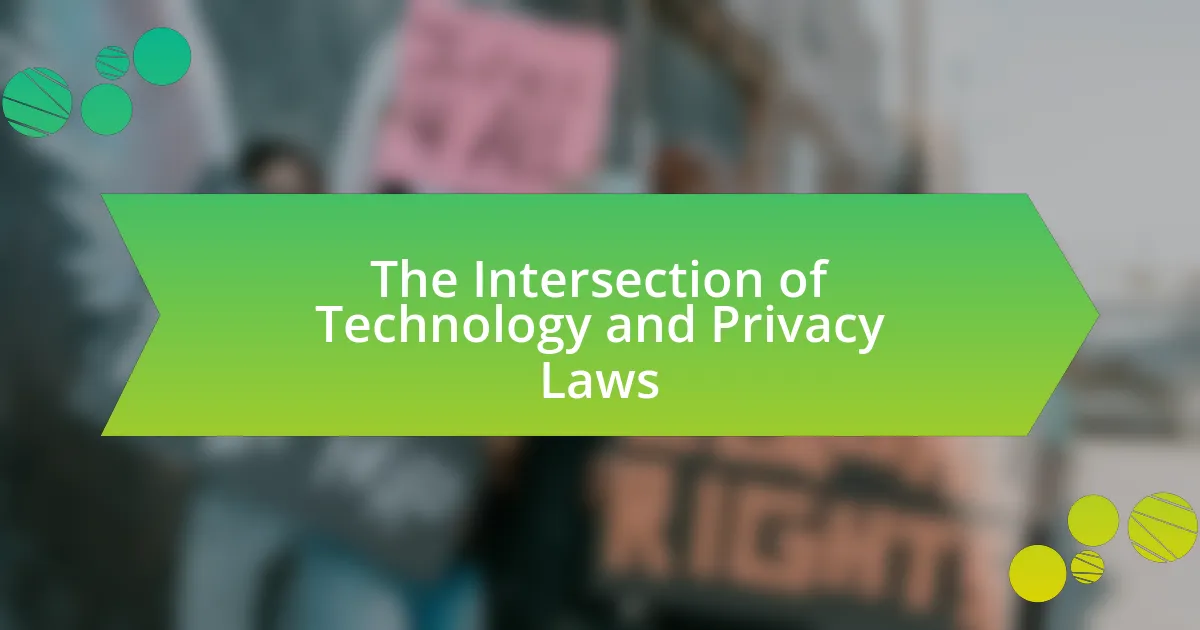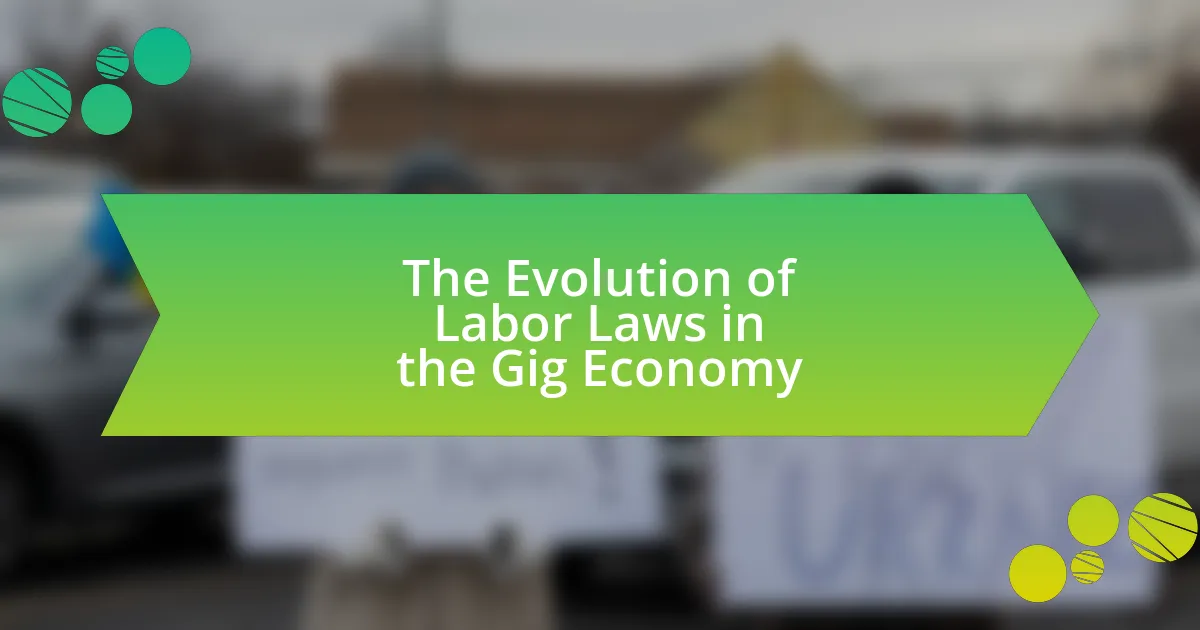Local governments are increasingly adapting to climate change policies through various strategies aimed at enhancing sustainability and resilience. Key initiatives include the adoption of renewable energy sources, investment in climate adaptation infrastructure, and the development of community engagement programs. The article examines the impact of significant climate policies, such as the Paris Agreement and state-level mandates, on local government actions, highlighting regional variations in response strategies. It also discusses the challenges faced by municipalities, including funding limitations and political barriers, while emphasizing the importance of community involvement and data-driven decision-making in successful adaptation efforts.
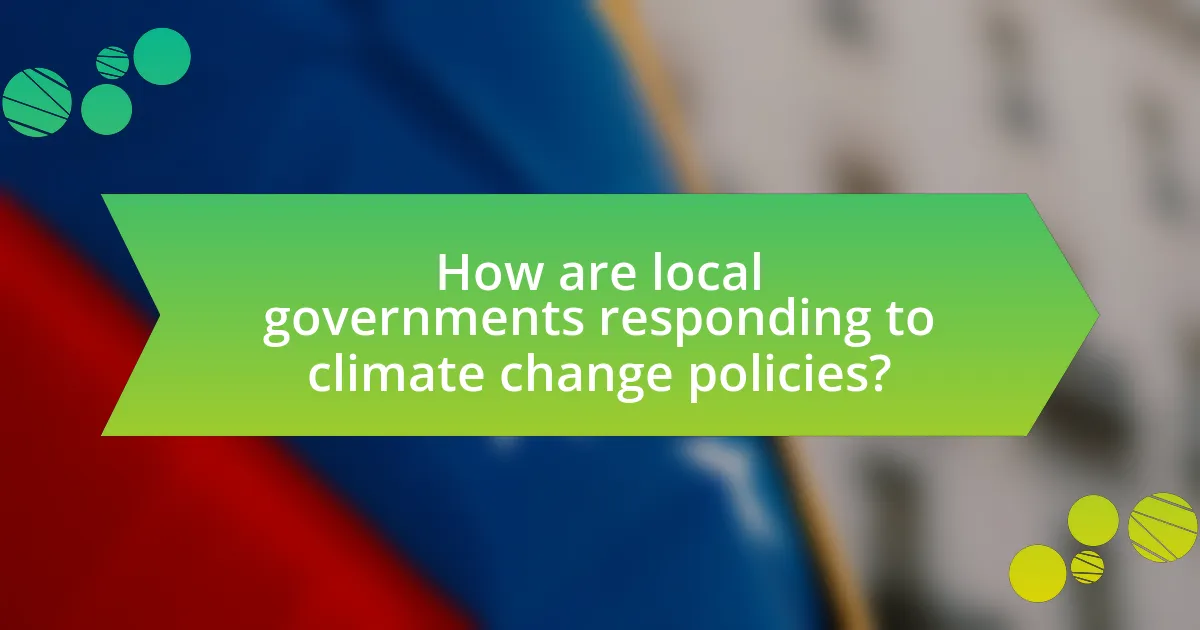
How are local governments responding to climate change policies?
Local governments are responding to climate change policies by implementing sustainability initiatives, enhancing infrastructure resilience, and promoting community engagement. For instance, many municipalities are adopting renewable energy sources, such as solar and wind, to reduce greenhouse gas emissions. According to the American Council for an Energy-Efficient Economy, over 1,000 local governments in the U.S. have committed to 100% clean energy goals. Additionally, local governments are investing in climate adaptation strategies, such as flood defenses and urban green spaces, to mitigate the impacts of climate change. The National League of Cities reports that 75% of cities have developed climate action plans, demonstrating a proactive approach to addressing climate-related challenges.
What are the key climate change policies affecting local governments?
Key climate change policies affecting local governments include the Paris Agreement, local climate action plans, and state-level greenhouse gas reduction mandates. The Paris Agreement, adopted in 2015, sets international climate goals that influence local policies by encouraging cities to commit to reducing emissions and enhancing resilience. Local climate action plans provide frameworks for municipalities to implement specific strategies tailored to their unique circumstances, often focusing on renewable energy, energy efficiency, and sustainable transportation. Additionally, state-level mandates, such as California’s Global Warming Solutions Act, require local governments to meet specific emissions reduction targets, thereby shaping their climate strategies and initiatives. These policies collectively drive local governments to adopt sustainable practices and invest in climate resilience.
How do these policies vary across different regions?
Climate change policies vary significantly across different regions due to factors such as local environmental conditions, economic capabilities, and political priorities. For instance, coastal regions like Florida implement policies focused on sea-level rise and hurricane preparedness, while arid regions such as California emphasize water conservation and wildfire management. Additionally, regions with strong industrial bases, like the Midwest, may prioritize emissions reduction strategies tailored to manufacturing, whereas rural areas might focus on agricultural adaptation measures. These variations are supported by data from the Global Climate Adaptation Partnership, which highlights that localized approaches are essential for effective climate resilience.
What are the main objectives of these climate change policies?
The main objectives of climate change policies are to reduce greenhouse gas emissions, enhance resilience to climate impacts, and promote sustainable development. These policies aim to mitigate climate change by transitioning to renewable energy sources, improving energy efficiency, and implementing carbon pricing mechanisms. For instance, the Paris Agreement, adopted in 2015, sets a global framework for countries to limit global warming to well below 2 degrees Celsius, emphasizing the need for national commitments to reduce emissions. Additionally, local governments are increasingly focusing on adaptation strategies, such as improving infrastructure and protecting ecosystems, to address the immediate effects of climate change on communities.
Why is it important for local governments to adapt to climate change?
Local governments must adapt to climate change to protect their communities from the increasing risks associated with extreme weather events, rising sea levels, and other climate-related impacts. By implementing adaptive measures, local governments can enhance resilience, safeguard public health, and ensure the sustainability of local economies. For instance, the National Oceanic and Atmospheric Administration (NOAA) reports that climate change is expected to increase the frequency and intensity of storms, which can lead to significant infrastructure damage and economic losses. Therefore, proactive adaptation strategies, such as improving drainage systems and investing in green infrastructure, are essential for mitigating these risks and promoting long-term community stability.
What risks do local governments face if they do not adapt?
Local governments face significant risks if they do not adapt to climate change policies, including increased vulnerability to natural disasters, economic losses, and public health crises. Failure to implement adaptive measures can lead to infrastructure damage from extreme weather events, which can cost municipalities millions in repairs and recovery efforts. For instance, the National Oceanic and Atmospheric Administration reported that the U.S. experienced over $1 billion in damages from climate-related disasters in 2020 alone. Additionally, local governments may encounter decreased property values and reduced tax revenues as communities become less desirable due to climate impacts. Public health risks also escalate, as unaddressed climate issues can lead to increased heat-related illnesses and the spread of vector-borne diseases. These interconnected risks underscore the necessity for local governments to proactively adapt to climate change to safeguard their communities and economies.
How can adaptation improve community resilience?
Adaptation can improve community resilience by enhancing the ability of communities to respond to and recover from climate-related challenges. By implementing adaptive strategies, such as developing infrastructure that withstands extreme weather events or creating policies that promote sustainable resource management, communities can reduce vulnerability and increase their capacity to cope with changes. For instance, a study by the National Oceanic and Atmospheric Administration (NOAA) found that communities that invested in climate adaptation measures experienced a 30% reduction in economic losses during natural disasters compared to those that did not. This evidence demonstrates that proactive adaptation not only mitigates risks but also strengthens the overall resilience of communities in the face of climate change.
What strategies are local governments implementing to adapt?
Local governments are implementing strategies such as enhancing infrastructure resilience, promoting sustainable land use, and increasing community engagement to adapt to climate change. For instance, cities like New York have invested in flood protection systems and green infrastructure to manage stormwater, while others, such as San Francisco, are adopting zoning regulations that prioritize climate resilience. These strategies are supported by data indicating that proactive adaptation measures can reduce long-term costs and improve community safety, as highlighted in reports from the Intergovernmental Panel on Climate Change.
How are local governments integrating sustainability into urban planning?
Local governments are integrating sustainability into urban planning by adopting policies that prioritize green infrastructure, energy efficiency, and community engagement. For instance, many municipalities are implementing zoning regulations that encourage mixed-use developments and the preservation of green spaces, which can reduce urban heat and improve air quality. Additionally, cities like San Francisco have established comprehensive climate action plans that set measurable targets for reducing greenhouse gas emissions, demonstrating a commitment to sustainability. These initiatives are often supported by data-driven assessments, such as the Urban Sustainability Directors Network’s findings, which highlight the effectiveness of sustainable practices in enhancing urban resilience and livability.
What role do community engagement and education play in adaptation efforts?
Community engagement and education are crucial in adaptation efforts as they foster local participation and enhance awareness of climate change impacts. Engaging communities allows local governments to incorporate diverse perspectives and knowledge, leading to more effective and tailored adaptation strategies. Education empowers individuals with the necessary skills and information to respond to climate challenges, promoting resilience. For instance, studies show that communities actively involved in adaptation planning are more likely to implement successful measures, as evidenced by the 2019 report from the Intergovernmental Panel on Climate Change, which highlights the importance of local knowledge in enhancing adaptive capacity.
How do local governments measure the effectiveness of their adaptation strategies?
Local governments measure the effectiveness of their adaptation strategies through a combination of quantitative metrics and qualitative assessments. They often utilize indicators such as reductions in vulnerability to climate impacts, improvements in community resilience, and the successful implementation of adaptation projects. For instance, cities may track changes in flood risk levels or heat-related health outcomes after implementing specific adaptation measures. Additionally, local governments may conduct surveys and stakeholder engagement to gather feedback on community perceptions of adaptation efforts, ensuring that strategies align with local needs and conditions. This multifaceted approach allows for a comprehensive evaluation of adaptation effectiveness, supported by data-driven insights and community input.
What metrics are used to assess progress in climate adaptation?
Metrics used to assess progress in climate adaptation include vulnerability assessments, adaptation indicators, and resilience metrics. Vulnerability assessments evaluate the susceptibility of communities to climate impacts, while adaptation indicators measure specific actions taken, such as infrastructure improvements or policy changes. Resilience metrics assess the capacity of systems to absorb shocks and recover from climate-related events. These metrics are essential for tracking effectiveness and guiding future adaptation strategies, as evidenced by frameworks like the Global Adaptation Network, which emphasizes the importance of measurable outcomes in climate adaptation efforts.
How can local governments adjust strategies based on evaluation results?
Local governments can adjust strategies based on evaluation results by analyzing performance metrics and community feedback to identify areas for improvement. For instance, if an evaluation reveals that a climate initiative is not meeting its emissions reduction targets, local governments can modify their approach by reallocating resources, enhancing public engagement, or implementing new technologies. Evidence from the 2020 report by the Global Covenant of Mayors for Climate and Energy indicates that cities that regularly assess their climate strategies are 30% more likely to achieve their sustainability goals. This data underscores the importance of continuous evaluation in refining local government strategies to effectively address climate change.
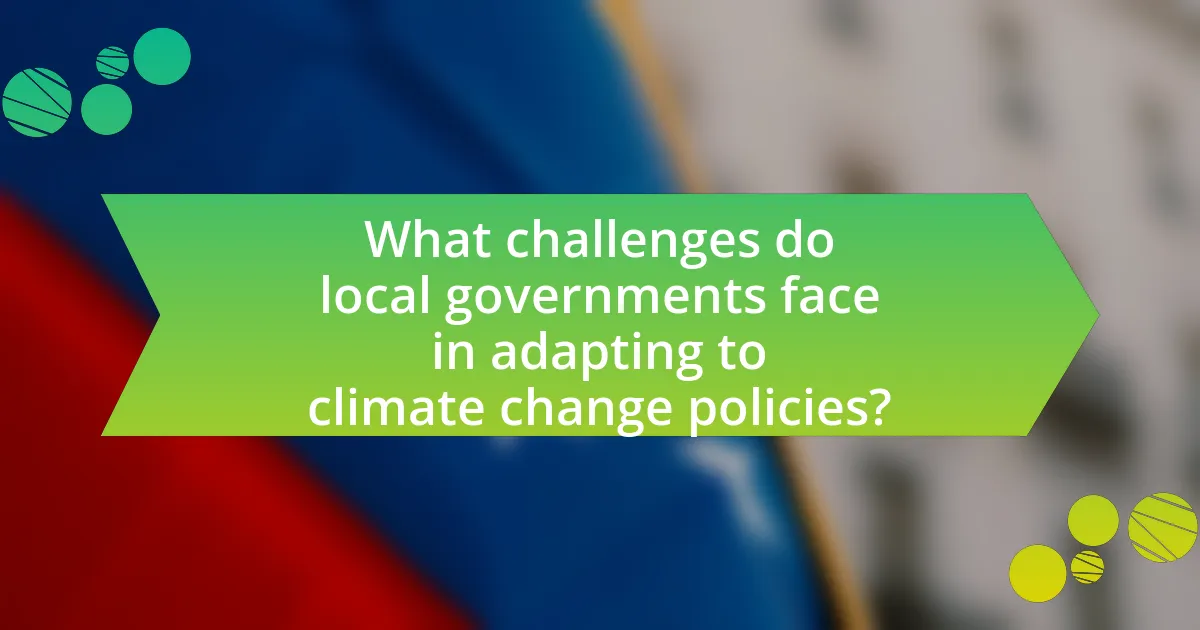
What challenges do local governments face in adapting to climate change policies?
Local governments face significant challenges in adapting to climate change policies, primarily due to limited financial resources, lack of technical expertise, and insufficient public engagement. Financial constraints hinder the ability to implement necessary infrastructure changes and invest in sustainable practices. For instance, a report by the National League of Cities indicates that many municipalities struggle with budget limitations that prevent them from allocating funds for climate resilience projects. Additionally, local governments often lack the technical expertise required to develop and execute effective climate strategies, which can lead to ineffective policy implementation. Furthermore, engaging the public in climate initiatives is crucial, yet many local governments find it challenging to communicate the importance of these policies effectively, resulting in low community participation and support.
How do funding and resource limitations impact adaptation efforts?
Funding and resource limitations significantly hinder adaptation efforts by local governments in addressing climate change. These constraints restrict the ability to implement necessary infrastructure improvements, conduct research, and engage communities effectively. For instance, a study by the National Oceanic and Atmospheric Administration (NOAA) found that municipalities with limited budgets often prioritize immediate needs over long-term climate adaptation strategies, leading to inadequate preparedness for climate impacts. Additionally, the lack of financial resources can result in reduced staffing and expertise, further diminishing the capacity to develop and execute comprehensive adaptation plans.
What innovative funding sources are local governments exploring?
Local governments are exploring innovative funding sources such as green bonds, public-private partnerships, and crowdfunding initiatives. Green bonds are specifically designed to finance projects with environmental benefits, and as of 2021, the global green bond market reached over $1 trillion in issuance, indicating strong interest and potential for local governments to tap into this resource. Public-private partnerships allow local governments to collaborate with private entities to fund infrastructure projects, sharing both the financial burden and the benefits. Additionally, crowdfunding initiatives enable communities to raise funds directly from residents for local climate projects, fostering community engagement and investment in sustainability efforts. These funding sources are increasingly recognized as viable options to support climate change adaptation strategies.
How can partnerships enhance resource availability for adaptation?
Partnerships can enhance resource availability for adaptation by pooling financial, technical, and human resources from multiple stakeholders. Collaborative efforts between local governments, non-governmental organizations, and private sectors can lead to shared funding opportunities, such as grants and investments, which increase the overall resource base for climate adaptation initiatives. For instance, the Global Environment Facility has facilitated partnerships that mobilize over $4 billion in funding for climate adaptation projects worldwide, demonstrating the effectiveness of collaborative resource mobilization. Additionally, partnerships can foster knowledge exchange and capacity building, enabling local governments to implement more effective adaptation strategies by leveraging expertise and best practices from various sectors.
What political and social barriers hinder effective adaptation?
Political and social barriers that hinder effective adaptation include lack of political will, inadequate funding, and social inequality. Political will is often undermined by competing interests and short-term priorities, which can delay or prevent the implementation of necessary climate policies. For instance, local governments may prioritize economic growth over environmental sustainability, leading to insufficient adaptation measures. Inadequate funding further exacerbates the issue, as many local governments lack the financial resources to invest in climate resilience projects. According to a report by the United Nations, approximately 70% of local governments cite budget constraints as a significant barrier to climate adaptation efforts. Social inequality also plays a critical role, as marginalized communities often lack access to resources and decision-making processes, making it difficult for them to adapt effectively. Research by the Intergovernmental Panel on Climate Change highlights that vulnerable populations are disproportionately affected by climate impacts, which can lead to increased social tensions and hinder collective adaptation efforts.
How do differing political priorities affect climate action?
Differing political priorities significantly affect climate action by determining the allocation of resources and the implementation of policies. For instance, governments prioritizing economic growth over environmental sustainability may delay or weaken climate regulations, as seen in countries where fossil fuel industries hold substantial political influence. This can lead to inadequate funding for renewable energy projects and insufficient support for climate adaptation initiatives. Conversely, regions with strong environmental agendas often enact ambitious climate policies, such as California’s cap-and-trade system, which has successfully reduced greenhouse gas emissions by over 25% since its implementation. Thus, the political landscape directly shapes the effectiveness and urgency of climate action efforts.
What role does public perception play in adaptation initiatives?
Public perception significantly influences adaptation initiatives by shaping community support and engagement. When the public perceives climate change as a pressing issue, local governments are more likely to receive backing for adaptation policies and funding. For instance, a study by the Pew Research Center found that 70% of Americans believe climate change is affecting their local community, which drives demand for proactive measures. This public awareness can lead to increased participation in adaptation programs, ensuring that initiatives are more effective and aligned with community needs.
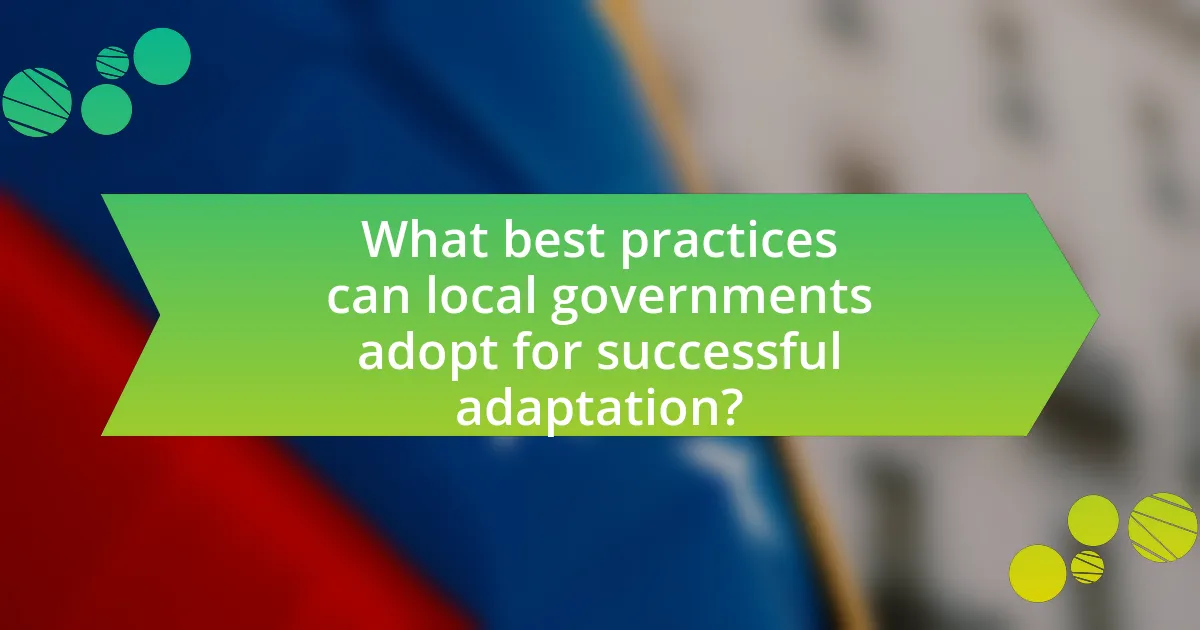
What best practices can local governments adopt for successful adaptation?
Local governments can adopt best practices for successful adaptation by implementing comprehensive climate action plans that include stakeholder engagement, risk assessment, and resilience building. Engaging local communities ensures that adaptation strategies reflect the needs and priorities of residents, while thorough risk assessments identify vulnerabilities and inform targeted interventions. For instance, the City of New York’s Climate Resiliency Design Guidelines provide a framework for integrating climate considerations into infrastructure projects, demonstrating the effectiveness of structured planning. Additionally, investing in green infrastructure, such as urban forests and permeable pavements, has been shown to reduce urban heat and manage stormwater effectively, as evidenced by studies from the National Oceanic and Atmospheric Administration. These practices collectively enhance community resilience and ensure sustainable adaptation to climate change impacts.
How can local governments foster collaboration with stakeholders?
Local governments can foster collaboration with stakeholders by establishing inclusive platforms for dialogue and decision-making. These platforms, such as community forums and advisory committees, enable diverse stakeholder participation, ensuring that various perspectives are considered in climate change policy development. Research indicates that local governments that engage stakeholders in the planning process can enhance trust and cooperation, leading to more effective implementation of climate initiatives. For example, the City of San Diego’s Climate Action Plan involved extensive stakeholder engagement, resulting in broader community support and successful policy outcomes.
What are effective methods for engaging the community in adaptation planning?
Effective methods for engaging the community in adaptation planning include participatory workshops, surveys, and collaborative decision-making processes. Participatory workshops allow community members to share their experiences and insights, fostering a sense of ownership in the planning process. Surveys can gather broad input from diverse demographics, ensuring that various perspectives are considered. Collaborative decision-making processes, such as forming advisory committees with community representatives, enhance transparency and trust. Research indicates that communities involved in adaptation planning are more likely to support and implement strategies, as evidenced by case studies in cities like New York and San Francisco, where community engagement led to more effective climate resilience initiatives.
How can knowledge sharing among local governments enhance adaptation efforts?
Knowledge sharing among local governments enhances adaptation efforts by facilitating the exchange of best practices, resources, and innovative solutions tailored to local climate challenges. This collaborative approach allows governments to learn from each other’s experiences, reducing the time and costs associated with trial-and-error methods. For instance, the sharing of successful case studies, such as the implementation of green infrastructure in one municipality, can inspire similar initiatives in others, leading to more effective and timely responses to climate impacts. Research indicates that local governments that engage in knowledge sharing are better equipped to develop comprehensive adaptation strategies, as evidenced by the increased resilience observed in communities that participate in intergovernmental networks focused on climate adaptation.
What lessons can be learned from successful local government adaptation cases?
Successful local government adaptation cases demonstrate the importance of community engagement, data-driven decision-making, and collaboration across sectors. Community engagement ensures that adaptation strategies reflect the needs and priorities of residents, as seen in the case of New York City’s Climate Resiliency Design Guidelines, which incorporated public feedback to enhance urban infrastructure. Data-driven decision-making allows local governments to assess vulnerabilities and prioritize actions effectively; for instance, the City of San Francisco utilized climate modeling to inform its Sea Level Rise Action Plan. Collaboration across sectors, such as partnerships between local governments and non-profit organizations, enhances resource sharing and innovation, exemplified by the collaboration between the City of Seattle and local environmental groups to implement green stormwater infrastructure. These lessons highlight that successful adaptation requires inclusive processes, informed planning, and cooperative efforts.
What specific examples demonstrate effective adaptation strategies?
Local governments demonstrate effective adaptation strategies through initiatives such as the implementation of green infrastructure, community engagement programs, and climate-resilient urban planning. For instance, New York City’s Green Infrastructure Plan integrates green roofs and permeable pavements to manage stormwater, reducing flooding risks. Additionally, the city of Copenhagen has developed a Climate Adaptation Plan that includes the construction of climate-resilient parks and waterfronts to mitigate the impacts of rising sea levels. These strategies are supported by data showing that cities investing in green infrastructure can reduce urban heat by up to 5 degrees Celsius, thereby enhancing community resilience to climate change.
How can these examples be replicated in other regions?
Local governments can replicate successful climate change adaptation examples by implementing tailored policies, engaging community stakeholders, and utilizing data-driven approaches. For instance, regions can adopt similar frameworks to those used in cities like Copenhagen, which has effectively integrated green infrastructure into urban planning, reducing flood risks by 50% through sustainable drainage systems. Additionally, fostering partnerships with local organizations and leveraging funding opportunities can enhance resource allocation and community involvement, as seen in the case of New York City’s climate resilience initiatives. By analyzing these successful strategies and adapting them to local contexts, other regions can effectively address their unique climate challenges.
What practical steps can local governments take to enhance their adaptation efforts?
Local governments can enhance their adaptation efforts by implementing comprehensive climate action plans that include risk assessments, community engagement, and infrastructure improvements. These plans should identify vulnerabilities to climate impacts, such as flooding or heatwaves, and prioritize actions to mitigate these risks. For instance, the City of New York’s “OneNYC” initiative integrates climate resilience into urban planning, demonstrating a structured approach to adaptation. Additionally, local governments can invest in green infrastructure, such as rain gardens and permeable pavements, which have been shown to reduce urban flooding by managing stormwater effectively. Engaging with local communities through workshops and feedback sessions ensures that adaptation strategies are tailored to the specific needs and concerns of residents, fostering greater public support and participation.
How can local governments prioritize actions based on vulnerability assessments?
Local governments can prioritize actions based on vulnerability assessments by systematically identifying and evaluating the risks faced by their communities. This process involves analyzing data on environmental hazards, socio-economic factors, and infrastructure resilience to determine which areas and populations are most at risk. For instance, a study by the National Oceanic and Atmospheric Administration (NOAA) highlights that communities that utilize vulnerability assessments can effectively allocate resources to the most vulnerable populations, ensuring that interventions are targeted where they are needed most. By employing this data-driven approach, local governments can enhance their climate adaptation strategies and improve overall community resilience.
What tools and resources are available to assist local governments in adaptation planning?
Local governments can utilize various tools and resources for adaptation planning, including climate adaptation frameworks, online toolkits, and funding programs. For instance, the Climate Adaptation Knowledge Exchange (CAKE) provides a comprehensive database of adaptation strategies and case studies that local governments can reference. Additionally, the Federal Emergency Management Agency (FEMA) offers resources such as the Local Mitigation Planning Handbook, which guides communities in developing effective mitigation plans. Furthermore, the National Oceanic and Atmospheric Administration (NOAA) provides the Digital Coast Toolkit, which assists coastal communities in planning for climate impacts. These resources are validated by their widespread use in successful adaptation planning efforts across various jurisdictions.




